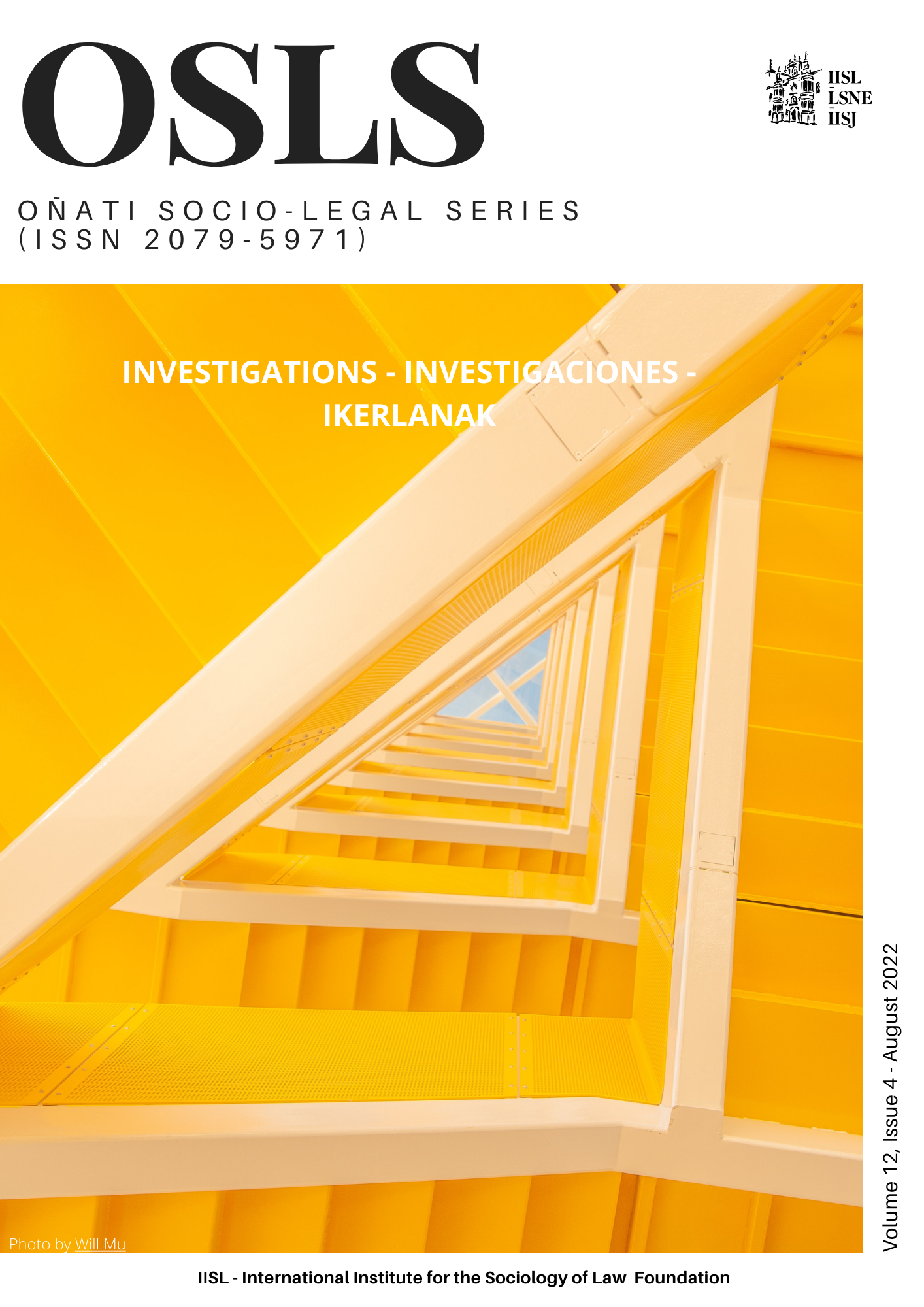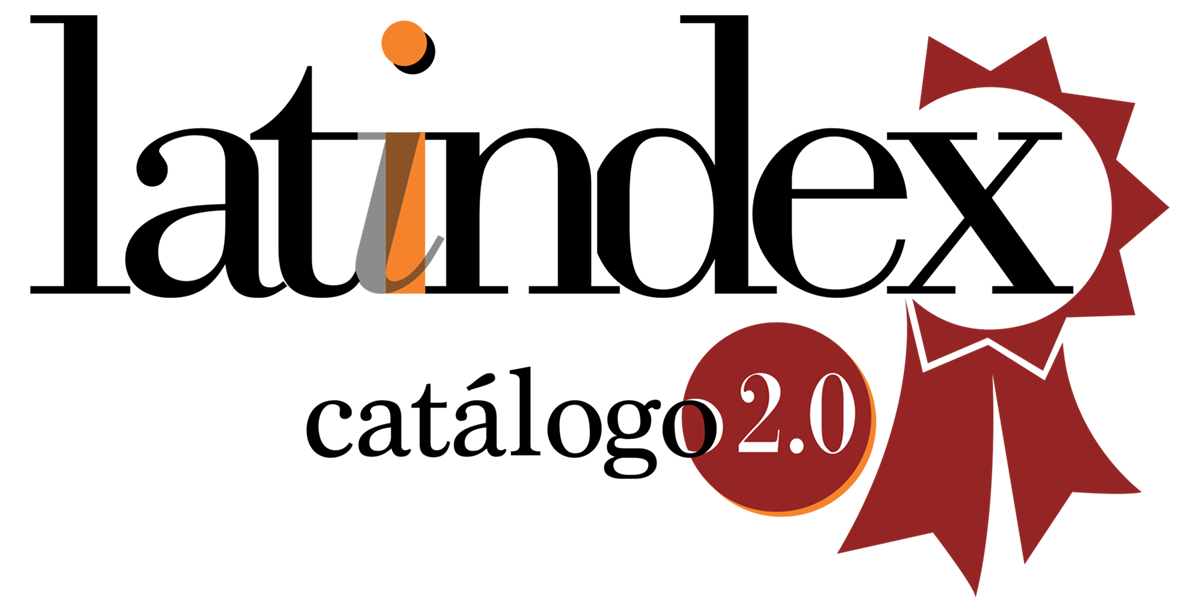Coping with the undesired consequences of jury reform
How does the Russian criminal justice system control an acquittals spike over the reform 2018-2020?
DOI:
https://doi.org/10.35295/osls.iisl/0000-0000-0000-1268Keywords:
Russian criminal justice system, jury reform, crime control model, autopoiesis, acquittals prevention strategiesAbstract
The historical development of the Soviet-Russian Criminal Justice System shows that there are ongoing negative attitudes towards acquittals amongst law enforcement agencies in Russia. Each period of acquittal rate rise is scrupulously monitored and controlled. Today, an acquittals spike in modern Russia is happening by virtue of Jury Reform, which has broadened the jury trial to the level of District Courts. By drawing on qualitative data from the observation of trials by jury, this paper explores the set of strategies and tactics, which the Criminal Justice System deploys to increase chances of reaching a guilty verdict by jury. The most frequently used strategies include manipulation in communication, trial “recursion”, trial acceleration, and system’s learning. The theoretical basis of research acknowledges N. Luhmann’s theory of autopoietic social systems and the Crime Control Model of H. Packer.
Downloads
Metrics
Global Statistics ℹ️
|
1151
Views
|
698
Downloads
|
|
1849
Total
|
|
References
Baxter, H., 2013. Niklas Luhmann’s theory of autopoietic legal systems. Annual Review of Law and Social Science [online], 9, 167-184. Available from: https://scholarship.law.bu.edu/faculty_scholarship/140 [Accessed 12 December 2019]. DOI: https://doi.org/10.1146/annurev-lawsocsci-102612-134027
Bornstein, B.H., and Greene, E., 2011. Jury decision making: implications for and from psychology. Current Directions in Psychological Science [online], 20(1), 63–67. Available from: https://psycnet.apa.org/doi/10.1177/0963721410397282 [Accessed 2 February 2022]. DOI: https://doi.org/10.1177/0963721410397282
Duff, P., and Findlay, M., 1997. Jury reform: of myths and moral panics. International Journal of the Sociology of Law, 25(4), 363–384. DOI: https://doi.org/10.1006/ijsl.1997.0049
Goldbach, T.S., and Hans, V.P., 2014. Juries, lay judges, and trials. Cornell Law Faculty Working Papers [online], 122, 1-15. Available from: https://scholarship.law.cornell.edu/clsops_papers/122/ [Accessed 14 April 2020].
Hans, V.P., 1992. Jury decision making. In: D.K. Kagehiro and W.S. Laufer, eds., Handbook of Psychology and Law [online]. New York: Springer, 56-76. Available from: https://doi.org/10.1007/978-1-4757-4038-7_4 [Accessed 2 February 2022]. DOI: https://doi.org/10.1007/978-1-4757-4038-7_4
Hans, V.P., 2008. Jury systems around the world. Annual Review of Law and Social Science [online], 4, 275-297. Available from: https://scholarship.law.cornell.edu/facpub/305/ [Accessed 27 July 2020]. DOI: https://doi.org/10.1146/annurev.lawsocsci.4.110707.172319
Hendry, J., and King, C., 2017. Expediency, legitimacy, and the rule of law: a systems perspective on civil/criminal procedural hybrids. Criminal Law and Philosophy [online], 11, 733-757. Available from: https://doi.org/10.1007/s11572-016-9405-6 [Accessed 2 February 2022]. DOI: https://doi.org/10.1007/s11572-016-9405-6
Jimeno-Bulnes, M., 2004. Lay participation in Spain: the jury system. International Criminal Justice Review, 14(1), 164-185. DOI: https://doi.org/10.1177/105756770401400107
Jimeno-Bulnes, M., 2011. Jury selection and jury trial in Spain: between theory and practice. Chicago-Kent Law Review [online], 86(2), 585-611. Available from: http://scholarship.kentlaw.iit.edu/cklawreview/vol86/iss2/7/ [Accessed 8 November 2020].
Jimeno-Bulnes, M., and Hans V.P., 2016. Legal interpreter for the jury: the role of the clerk of the court in Spain. Oñati Socio-Legal Series [online], 6(2), 197-215. Available from: https://opo.iisj.net/index.php/osls/article/view/552 [Accessed 31 October 2020].
Judicial Department at the Supreme Court of the RF (JDASCORF), 2020. Otchet o rabote sudov obshchej yurisdikcii po rassmotreniyu ugolovnyh del po pervoj instancii [The report on the work of general jurisdiction courts in handling criminal cases as courts of first instance] (online). Available from: http://www.cdep.ru/index.php?id=79&item=5258 [Accessed 10 April 2020].
Judicial Department at the Supreme Court of the RF (JDASCORF), 2021. Otchet o rabote sudov obshchej yurisdikcii po rassmotreniyu ugolovnyh del po pervoj instancii [The report on the work of general jurisdiction courts in handling criminal cases as courts of first instance] (online). Available from: http://www.cdep.ru/index.php?id=79&item=5671 [Accessed 22 August 2021].
Khodzhaeva, E., 2020a. Statisticheskaya spravka “Sudy s uchastiem prisyazhnyh v 2018-2019 godah” [Jury trials in 2018-2019. Statistics] (online). Available from:¡Error! Referencia de hipervínculo no válida. https://enforce.spb.ru/products/other-publications/7385-spravka-sudy-s-uchastiem-prisyazhnykh-v-2018-2019-godakh [Accessed 13 March 2020].
Khodzhaeva, E., 2020b. Sudy prisyazhnyh v oficial'noj statistike [The official statistics about jury trials: an analytical review] (online). The Institute for the Rule of Law at the European University, Saint-Petersburg. Available from: https://enforce.spb.ru/images/analytical_review/IRL_prisyazhnye_online.pdf [Accessed 22 August 2021].
Khodzhaeva, E., 2020c. Very prisyazhnym u sudej net [Professional Judges Do Not Trust Jurors]. Novaya gazeta [online], 5 October. Available from: https://novayagazeta.ru/articles/2020/10/05/87386-very-prisyazhnym-u-sudey-net [Accessed 10 October 2020].
King, M., and Thornhill C., 2003. Niklas Luhmann’s Theory of Politics and Law. Basingstoke: Palgrave Macmillan. DOI: https://doi.org/10.1057/9780230503588
Korobka, E., 2020. U gosudarstvennyh organov poyavitsya dostup k informacii o sudimostyah kandidatov v prisyazhnye zasedateli [State bodies will have access to information about criminal records of potential jurors] Adv gazeta [online], 10 September. Available from: https://www.advgazeta.ru/diskussii/reforma-suda-prisyazhnykh/ [Accessed 7 November 2020].
McCarthy, L., 2015. Trafficking Justice: How Russian Police Enforce New Laws, From Crime to Courtroom. Ithaca/London: Cornell University Press. DOI: https://doi.org/10.7591/cornell/9780801453892.001.0001
Myers, D.G., 2002. Social Psychology. 7th ed. Toronto: McGraw Hill Canada.
Packer, H.L., 1964. Two models of the criminal process. University of Pennsylvania Law Review [online], 113(1), 1-68. Available from: https://scholarship.law.upenn.edu/cgi/viewcontent.cgi?article=6428&context=penn_law_review [Accessed 10 September 2019]. DOI: https://doi.org/10.2307/3310562
Paneyakh, E., 2014. Faking performance together: systems of performance evaluation in Russian enforcement agencies and production of bias and privilege. Post-Soviet Affairs 30(2–3), 115-136. DOI: https://doi.org/10.1080/1060586X.2013.858525
Parsons, T., 1991. The Social System. 2nd ed. London: Routledge.
Parsons, T., and Shils, E., 1964. Toward a General Theory of Action: Theoretical Foundations for the Social Sciences. Piscataway: Transaction.
Petrukhin, I.L., 2009. Opravdatel'nyy prigovor i pravo na reabilitatsiyu [Acquittal and the Right to Rehabilitation]. Moscow: Prospect.
Philippopoulos-Mihalopoulos, A., 2009. Niklas Luhmann: Law, Justice, Society. Abingdon: Routledge. DOI: https://doi.org/10.4324/9780203872086
Sherrod, D.R., 2019. The Jury Crisis: What’s Wrong with Jury Trials and How We Can Save Them. Lanham: Rowman & Littlefield.
Smelser, N.J., 1963. Theory of Collective Behavior. New York: Simon & Schuster. DOI: https://doi.org/10.1037/14412-000
Smith, C. E., 1994. Imagery, politics, and jury reform. Akron Law Review [online], 28(summer), 77-95. Available from: https://www.uakron.edu/dotAsset/c7d3258c-0cca-43e3-bb52-070c76efab8a.pdf [Accessed 24 November 2019].
Solomon, P.H. Jr., 1987. The case of the vanishing acquittal: informal norms and the practice of soviet criminal justice. Soviet Studies, 39(4), 531–555. DOI: https://doi.org/10.1080/09668138708411718
Terrill, R.J., 2016. World Criminal Justice Systems. 9th ed. New York: Routledge. DOI: https://doi.org/10.4324/9781315624389
Teubner, G., 1993. Law as an Autopoietic System. Padstow: T.J. Press.
Thaman, S.C., 1995. The resurrection of trial by jury in Russia. Stanford Journal of International Law [online], 31(61), 61-274. Available from: https://papers.ssrn.com/sol3/papers.cfm?abstract_id=2573899 [Accessed 10 August 2020].
Thaman, S.C., 2007a. The good, the bad, or the indifferent: 12 angry men in Russia. Chicago-Kent Law Review [online], 82(2), 791-808. Available from: https://scholarship.kentlaw.iit.edu/cklawreview/vol82/iss2/18/ [Accessed 2 February 2022].
Thaman, S.C., 2007b. The nullification of the Russian jury: lessons for jury-inspired reform in Eurasia and beyond. Cornell International Law Journal [online], 40(2), 357-428. Available from: https://scholarship.law.cornell.edu/cilj/vol40/iss2/3/ [Accessed 13 August 2020].
Thaman, S.C., 2008. The two faces of justice in the post-Soviet legal sphere: adversarial procedure, jury trial, plea-bargaining and the inquisitorial legacy, In: J.D. Jackson, M. Langer and P. Tillers, eds., Crime, Procedure and Evidence in Comparative and International Context. Essays in Honour of Professor Mirjan Damaska. Oxford/Portland: Hart, 99-118.
Vogler, R., 2006. A World View of Criminal Justice. Bodmin: MPG Books.
Weisberg, R., 2005. The death penalty meets social science: deterrence and jury behavior under new scrutiny. Annual Review of Law and Social Science [online], 1(1), 151-170. Available from: http://dx.doi.org/10.1146/annurev.lawsocsci.1.051804.082336 [Accessed 2 February 2022]. DOI: https://doi.org/10.1146/annurev.lawsocsci.1.051804.082336
Downloads
Published
How to Cite
Issue
Section
License
Copyright (c) 2022 Konstantin Vladimirovich Skoblik

This work is licensed under a Creative Commons Attribution-NonCommercial-NoDerivatives 4.0 International License.
OSLS strictly respects intellectual property rights and it is our policy that the author retains copyright, and articles are made available under a Creative Commons licence. The Creative Commons Non-Commercial Attribution No-Derivatives licence is our default licence and it regulates how others can use your work. Further details available at https://creativecommons.org/licenses/by-nc-nd/4.0 If this is not acceptable to you, please contact us.
The non-exclusive permission you grant to us includes the rights to disseminate the bibliographic details of the article, including the abstract supplied by you, and to authorise others, including bibliographic databases, indexing and contents alerting services, to copy and communicate these details.
For information on how to share and store your own article at each stage of production from submission to final publication, please read our Self-Archiving and Sharing policy.
The Copyright Notice showing the author and co-authors, and the Creative Commons license will be displayed on the article, and you must agree to this as part of the submission process. Please ensure that all co-authors are properly attributed and that they understand and accept these terms.























